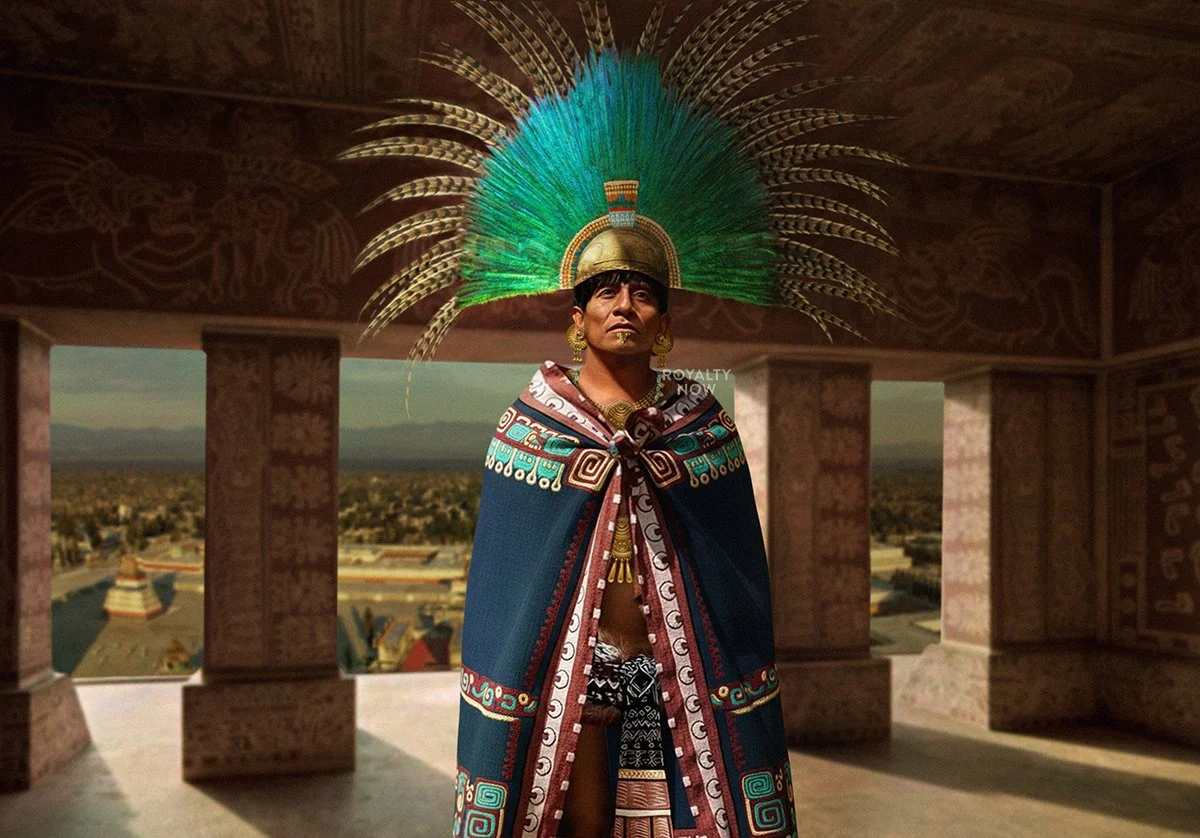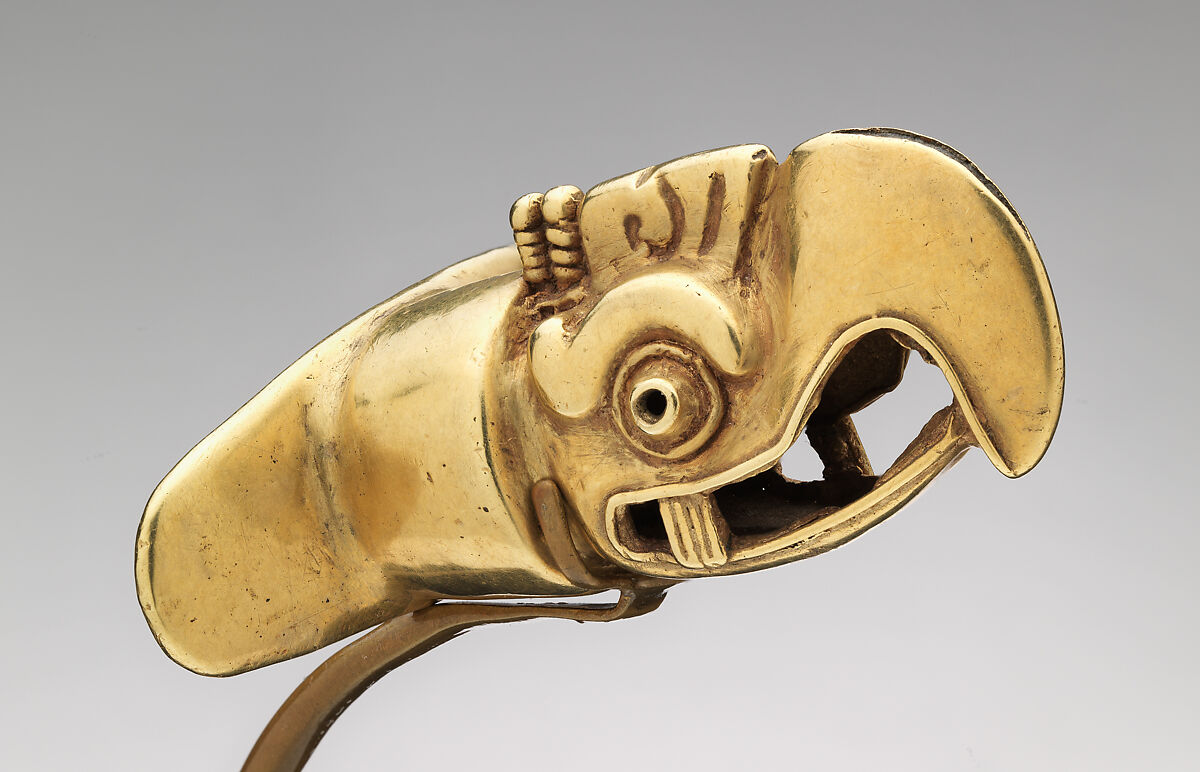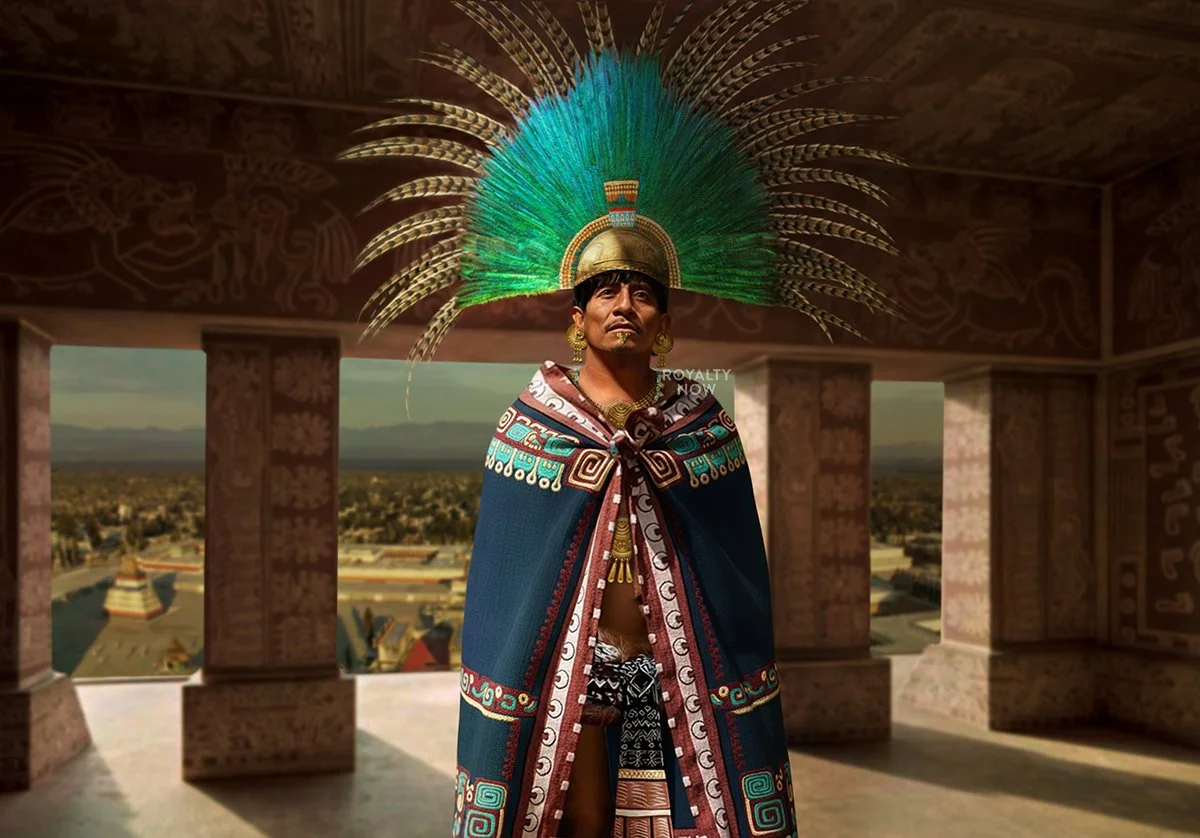What did the Aztec Emperor Moctezuma look like?
The Aztec (Mexica) form of art is not naturalistic.
The short answer is: unfortunately, we don’t know too much. Aztec portraits weren’t like those from the Maya culture or from Europe. Aztec rulers weren’t painted in a realistic way — figures were shown more symbolically. And after Cortés’s destruction of Tenochtitlan, we’re lucky that anything survives at all.
Make sure to watch the full video with more details and re-creations.
There are a few European-made portraits of Moctezuma, but they were created long after his death, so they’re not reliable. Our best clues come from the surviving codices that show Aztec clothing and accessories.
For Aztec men, there was a classic outfit: a loincloth and an outer cloak. As you moved up the social ladder, those pieces just got more ornate. The empire had strict sumptuary laws about who could wear what—only elites could wear cotton or decorate their cloaks with embroidery.
When it comes to jewelry, the Aztecs were master goldsmiths. People from all classes wore gold, but elites wore more of it. They would basically be dripping in gold, turquoise, jade, feathers, and shells.
The sad part is that very little of Aztec material culture survives today. We have to make a lot of educated guesses about decoration and textiles—there are no surviving fabrics at all, and only a handful of featherworks.
Mayan Plasterwork from Palenque, showcasing their naturalistic art style
So for Moctezuma’s face in my re-creation, I drew inspiration from Mayan portraits discovered at Palenque. While the Mayans culture is of course different, the two cultures inhabited similar areas on the globe and would share a lot of characteristics.
So now, let’s take a look at my re-creation—and then I’ll break down the specific elements I used:
I dug through a ton of real artifacts for this depiction. A lot of Aztec jewelry survives because it ended up as sunken treasure—either lost on the night the Spanish tried to flee with it, or in shipwrecks on the way back to Spain. Thanks to that, we know elite Aztecs wore distinctive earrings made of flares, a back disc, and dangling pendants.
The earrings in my piece are constructed from real examples like these.
Eagle Labret (Metropolitan Museum)
Eagle Ear Pendants
The lip plug is an actual artifact too—it depicts an eagle. And the necklaces come from a famous trove known as the Fisherman’s Treasure.
And then of course - the headdress. The Aztecs were famous for these—huge, ornate pieces made of gold and shimmering feathers.
This particular one is one of the few surviving examples. Today, it’s often called “Moctezuma’s Headdress,” though we can’t be sure he ever wore it. According to legend, Cortés took it simply because it was so beautiful—and that’s the only reason it still exists.
Although most Aztecs did not wear facial hair and considered it ugly, they are a few examples of eyewitnesses describing Moctezuma as wearing a small beard, so I’ve included a version with this as well.







